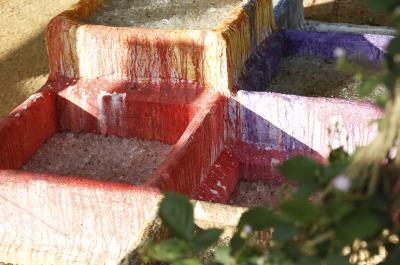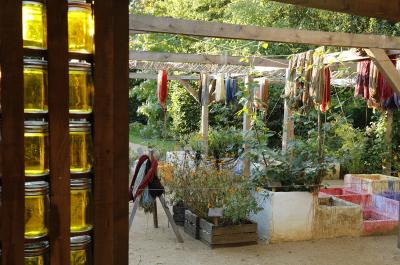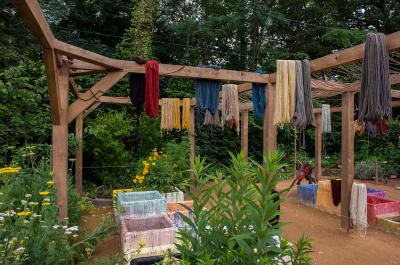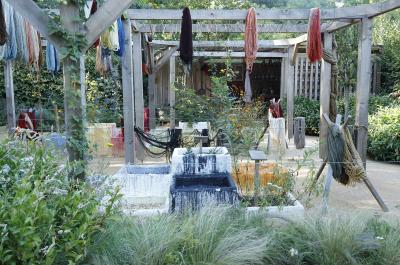11. LE JARDIN DU TEINTURIER
Le Jardin du Teinturier ("The dyer's garden") is "dying" to remind you about an often forgotten utility of plants - their colouring capabilities - which have rekindled our interest thanks to their eco-friendliness.

Venture into the dyer's estate and you'll be treated to an array of colours in natural shades reminiscent of the tanneries in Marrakesh. The colours obtained by these familiar-looking plants lining the pathway are surprising: madder-red, indigo-blue and broom-yellow and brown (...).
As you reach the bottom of the garden, let your curiosity get the better of you and explore the dyer's laboratory to unveil the secrets of this alchemy: drying, grinding, classification and storage of the roots or parts that grow above ground. Glance down at the notebooks revealing the colouring recipes thanks to the pigments contained in their flowers, leaves, berries, stems or roots. The colour swatches show the subtle shades obtained depending on the processes used.
designers
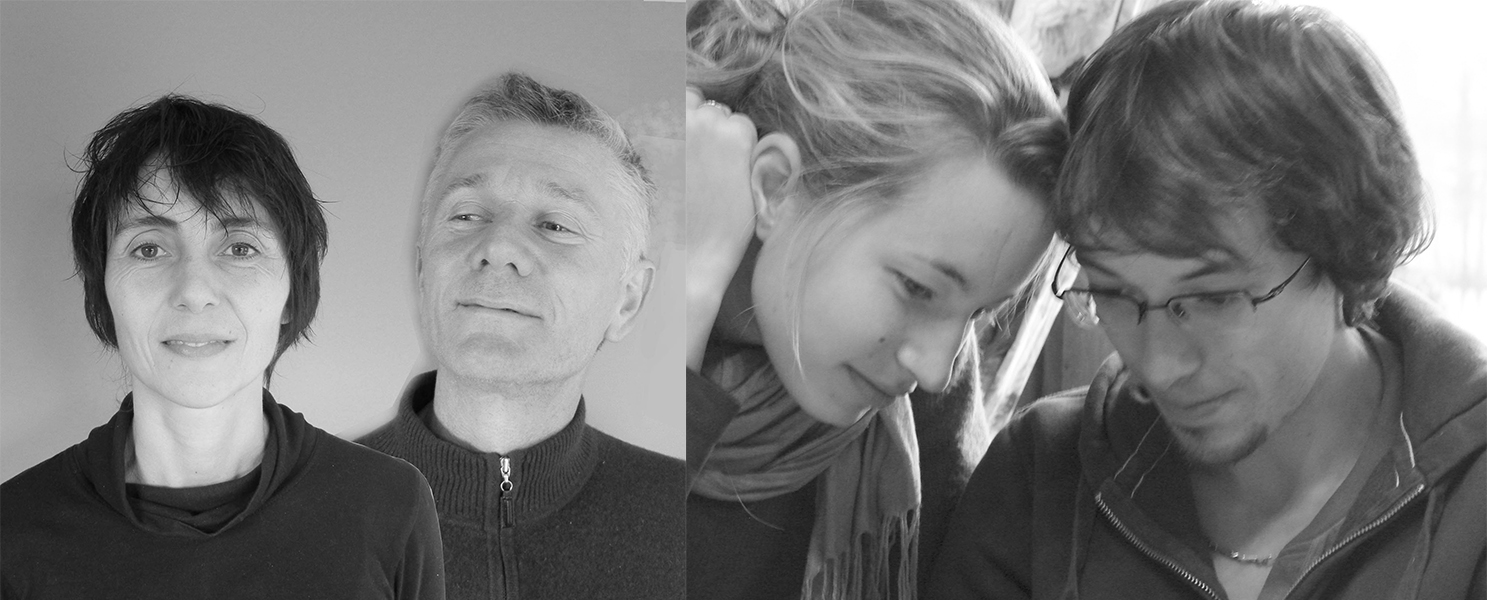
From left to right: Carine Balayn, Éric Sartre, Chloé Martin and Dorian Dietschy
Carine Balayn lives and works in Drôme. She graduated from Lyon School of Architecture, where the courses she took aroused her interest in building rehabilitation. Taking buildings trapped in their past and revealing their true potential through implementation of architectural projects designed to perpetuate them by endowing them with new purpose – such is the mission she seeks to fulfil in her professional life, the first 5 years of which she spent employed by a pair of freelance architects. In the end, the need to make her own choices led her to set up her own business, in association with a colleague of her own generation. Drôme was finally adopted as a base for their activities, given its living environment and the human scale of their projects. Integration into the landscape, and project footprint and relationship with the immediate environment are matters of constant concern in Atelier 3+’s architectural approach.
Dorian Dietschy lives and works in Isère. After obtaining a Vocational Studies Certificate and a Professional Baccalaureate in Horticulture, this inveterate plant-lover decided to specialise in landscaping and set off to study for a Higher Technical Certificate in Landscape Design at Saint Ismier Horticultural Lycée. His training there raised his awareness of the ecological context of the gardens he created, and he went on to study for a degree in Management of Landscaped Areas based on differentiated management techniques. After gathering experience during his various internships and degree-course placement year, he set about trying his hand in the field, designing and creating gardens for private clients, always focusing on ecology and reduction of maintenance needs. A brief interlude working in a Marseilles garden centre led him to discover a taste for sharing his interests and knowledge, and this in turn led him to teaching – first of all, pupils studying for a Professional Baccalaureate in Landscape Design at Saint Ismier Horticultural Lycée, and then jobseekers and people undergoing occupational retraining, at the company where he currently works.
Chloé Martin is currently studying in Marseilles. She was awarded a Higher Technical Certificate in Landscape Design after two years at Saint Ismier Horticultural Lycée near Grenoble. The mountains that have surrounded her since earliest childhood and the training she has so far undergone have served to sharpen her awareness of living environments in general and ecology in particular. Her studies have also involved her in a number of design, creation and maintenance internships, including one at Chaumont-sur-Loire. Following obtainment of the BTS, she sat for the Versailles/Marseilles ENSP’s competitive examination, was accepted, and is now in her 3rd year there. Mountain sports are high on her list of interests and enable her to discover new plants and imagine new layouts.
Éric Sartre lives and works in Mirabel-et-Blacons in Drôme. He was a student at the Grenoble School of Architecture, leaving in 1994 to round off his studies with a diploma prepared at the “Dessin - Chantier” workshop, a project and research laboratory under the direction of painter and History of Art and Architecture Professor Sergio Ferro, which focuses on establishing bridgeways between conception and creation – design and project implementation (“dessin et chantier”) – on how conception and creation work towards the same goal and feed off one another. Having trained him, the workshop recruited him, employing him as a member of their teaching team. The teaching of theoretical concepts and their application in production of the design object remained his main activity for 5 years, with works exhibited in various local galleries, Musée Dauphinois, and in Paris at the Arche de la Défense under the banner of VIA (Valorisation, Innovation, Ameublement). He finally felt the need for a change of scale in the projects he was involved in, returning to Drôme in 2001 and setting up as a freelance architect. Ecological issues and his personal sensibilities guided his vision of architecture and construction towards what was then termed “alternative” design. In 2005, he went into partnership with a colleague to set up an architectural firm, SCOP Habiter, specialising in ecological construction, pursuing his goal of building with healthy materials, using bioclimatic design techniques and ensuring economic relevance and respect for surroundings. Accompanying construction with “landscaping” was a transition enabling establishment of the close relationship that should bind any building to its surroundings, and now forms an integral part of his approach.


